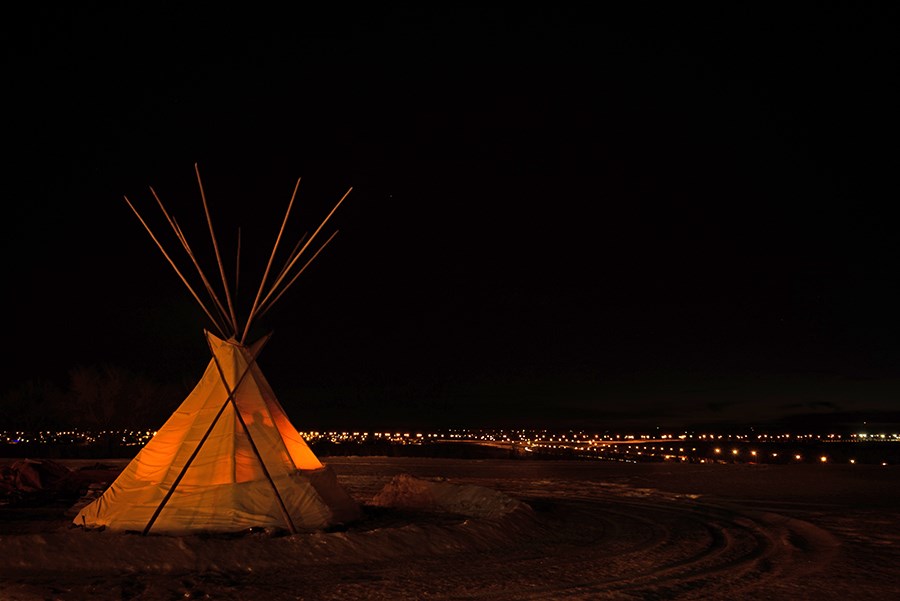My husband and I grew up in families that hunted wild game, mainly moose, for our primary meat source. So, it is no surprise that our children grew up hunting and eating wild game. Now our six-year-old grandson is learning the importance of our interconnectedness to our four-legged relative, the moose, and to the land.
This fall, my husband was out hunting by himself. I worried from the moment he left until the time he returned. Why? I thought about Jacob Sansom and his uncle Maurice Cardinal, Métis-Cree hunters who were found shot to death beside their vehicle while out hunting in March near Glendon, Alta. Two men from the area have each been charged with two counts of second-degree murder. Sansom and Cardinal, like my husband, were exercising their constitutionally recognized right to hunt for food.
So when my husband, Eugene, left that afternoon, I worried. When he returned, he told me that while he was hunting, a farmer approached and asked him what he was doing there, that his cows were grazing on that land. My husband replied that it was Crown land, his ancestors’ traditional territory, where they have hunted for generations. “I am not here hunting your cows. I am here hunting moose, and I have a treaty right to hunt.”
I should not fear for my husband’s safety when he hunts for food. I don’t want to worry about the racism my grandson will endure if we fail to pave a better path.
I get frustrated sometimes that too many Canadians still don’t understand First Nations’ treaty rights. At contact, our ancestors welcomed our white relatives and agreed to share the land – with conditions. Those conditions, negotiated with the Crown, include the constitutionally recognized right to access the land for food, as well as many other entitlements such as a right to education and health care. These rights have been reaffirmed many times by the courts. In other words, we all – Indigenous and non-Indigenous – have a responsibility for treaty relationships.
In the Indigenous worldview, we do not own the land. We are stewards of the land, our Mother Earth. How can we own our Mother? Rather, we respect and protect our Mother. That same respect is offered to our four-legged relative, the moose. If we kill a moose for food, we offer tobacco to its spirit because we believe it gave up its life so we have life, in the cycle of life. My husband and I are teaching our grandson about this spiritual connection and responsibility so he will have the same respect for the land, the animals, the fish, the insects and the waters, just as our ancestors taught us to respect the land and our other relatives.
Many years ago, I started to participate in our annual summertime fasting ceremonies. Led by Elders, we go out on the land without food and water for four days and four nights to sit quietly, by ourselves, away from the hustle and bustle of life. It is a time of introspection and appreciation for what is really important: our collective need for land and water, and how we must respect and protect them for our children, who are the future.
This brings me to another story. (Having learned from Elders, I know story is a powerful means of sharing life experiences and lessons.) A few years ago, I facilitated a talking circle about truth and reconciliation with a group of retired U of A professors. I spoke about the importance of the land and our collective relationship to the land. As we moved into a round of conversation, one man said: “I need to go back and talk to my grandson. I told him we left the land to move to urban centres. But I was wrong.” The discussion had helped him see we are all “of the land” and need to rekindle that individual connection toward our collective relationship to the land.
That Indigenous worldview – our interconnectedness to each other as human –°¿∂ ”∆µs and our collective connectedness to the land – is often misunderstood or not recognized. This contributes to ongoing racism, marginalization and oppression.
This fall, Treaty 8 Grand Chief Arthur Noskey, whose treaty area includes parts of Alberta, B.C., Saskatchewan and N.W.T., told The Star that a lot of resentment toward First Nations could be eased if Canadians understood history beyond a European perspective, including what the treaties mean. He was speaking in light of the fisheries dispute in Nova Scotia and leaked recommendations suggesting lessons about residential schools be removed from Alberta’s kindergarten-to-Grade 4 curriculum.
It is important that non-Indigenous Canadians learn about Indigenous Peoples’ history and rights and counter continued attempts to erase them. I encourage you – your organizations, your church groups, your chambers of commerce – to become educated. Read books, take online courses, watch TED Talks, build personal and professional relationships with Indigenous communities and organizations. Ask yourselves how you can implement the 94 calls to action outlined by the Truth and Reconciliation Commission.
We all have a responsibility to educate ourselves for this relationship to be balanced, to the benefit of all of us.
Patricia Makokis has an EdD in education. As an educator and consultant, she considers herself a servant leader, working for the people. She is co-producer of two educational documentaries: Treaty Talk: Sharing the River of Life and Treaty Walk: A Journey for Common Ground. She lives on the Saddle Lake Cree Nation.





